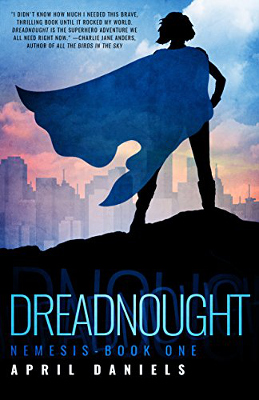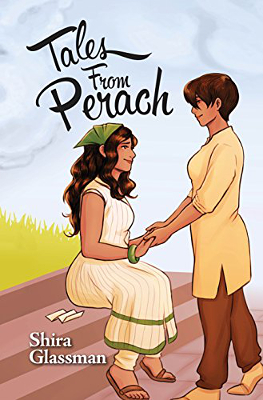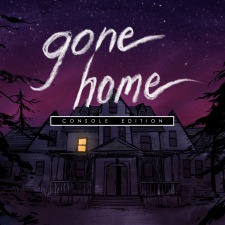 Series: Nemesis, #1
Series: Nemesis, #1
First Published: 24th January, 2017
Genre: Young Adult Superhero / Novel
Available: Amazon.com | Amazon UK
Danny is transgender, but she’s scared about telling anyone. When the superhero Dreadnought dies and transfers his powers to Danny, suddenly she gains her ideal body. Now everyone can see she’s a girl, so keeping it secret isn’t going to work anymore.
There are some pacing issues at the start. Dreadnought’s history is included as one long chunk of explanation, rather than sprinkling it in. Fortunately, this isn’t a common thing in the book and the pacing does improve.
Danny has social issues to face, such as the reaction from her parents and going back to school. She catches the attention of the local superhero team, which Dreadnought had been part of before his death. She also meets another young hero, Calamity, who has a very different perspective. Calamity is Latina and her family haven’t been treated well by the authorities, so she doesn’t trust the local team. Danny and Calamity’s relationship was the best part for me. They’re marginalised in different ways, which impacts their approaches to being heroes. Right from the start, Calamity is worried about the police and other authorities. This is something that Danny hasn’t really had to think about, as being white shields her from a lot of it.
The new supervillain is introduced right at the start, when Dreadnought is killed. It takes longer for anyone to figure out what she’s up to, as it isn’t the sort of plot the heroes are expecting. This opens up a larger mystery that will undoubtedly be the rest of the series.
I found this book very heavy, as there’s a lot of bigotry. Danny is called a variety of slurs, from ones aimed at trans people to ableist ones. She’s frequently misgendered. Her parents are abusive, and were before she transitioned, so that only gets worse. The result is Danny believes she’s a terrible person and constantly berates herself about being stupid and worthless. Then there’s the hero who thinks Danny is trying to infiltrate womankind and likens being trans to being a rapist. Some readers going through similar issues might find comfort in seeing someone else facing this, but some might find it too much.
Disability is touched on, though not in depth. Prior to getting superpowers, Danny has some hearing loss. This isn’t really explored outside of mentioning it was the case, which struck me as odd. Crowded places sound very different to me if I have something boosting the sound. An amputee appears later, but those scenes are too brief for me to have much to say. I expect that to be more relevant in the next book.
Though I thought it was a reasonable story, the binary way it approached gender didn’t work for me. Danny has internalised the idea that girls and boys have to act in set ways. Girls do this, boys do that. Girls have emotions like this, boys have emotions like that. There are a few quick references to maybe not everyone fitting this division, but it’s worded as though they’re rare exceptions to the rule.
In contrast, the narrative did challenge things like the media’s presentation of women’s bodies, the pressure to starve to stay thin, and other things like that. In those cases, Danny comes around to realising she’s internalised bad things. The gender stuff doesn’t get that realisation. A particular moment of discomfort is when a girl says she was forced to learn about makeup as the only girl in the family, which Danny thinks sounds wonderful without any reservations. This is no different from Danny being forced into playing football by her dad, as it’s all about enforcing expected gender roles, but it isn’t framed as a problem.
There are positive things about the book. It shows a trans lesbian teen coming out on top despite abuse and intolerance from the people around her. The larger mystery being set up for the series looks interesting. I only wish it’d not been quite so rigid when it came to gender.
[A copy of this book was received from the publisher for review purposes]
 First Published: 20th September, 2016
First Published: 20th September, 2016 Series: Mangoverse, #5
Series: Mangoverse, #5 First Published: 24th August, 2016
First Published: 24th August, 2016 Developer: The Fullbright Company
Developer: The Fullbright Company